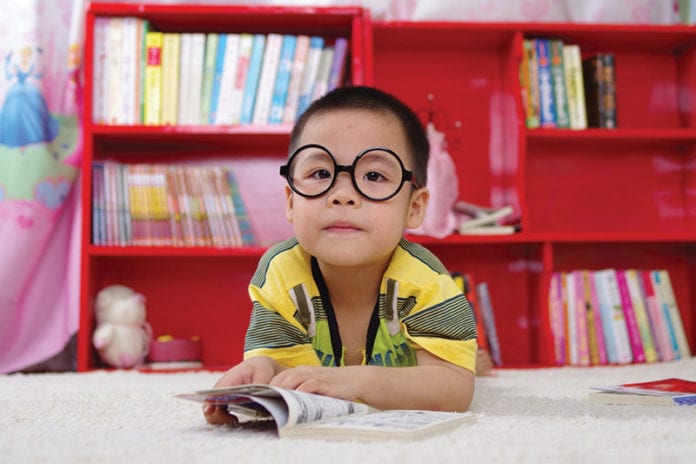Pediatricians, educators, and parents have always agreed on at least one thing: reading to your toddler - early on in life and regularly - is vital to promote language acquisition and also an enthusiasm for learning.
But does it make a difference if parents read from traditional print books, or for parents and kids to engage with electronic books? This ongoing debate has seen several studies in recent years, but there are still many unanswered questions.
A new study has found some striking trends. Electronic media may pose less of a disruptive impact to learning for toddlers than is the case for preschoolers.
Parents of 102 toddlers aged 17 to 26 months were randomly assigned to read two commercially available electronic books or two print books with identical content with their toddler. After reading, the children were asked to identify an animal presented in the books.
Conducted by Gabrielle A. Strouse of the School of Education at the University of South Dakota in the U.S.A., and Patricia A. Ganea of the Language and Learning Lab of the University of Toronto in Canada, and published in Frontiers in Psychology, the study found that the toddlers who were read the electronic books paid more attention, made themselves more available for story time, participated more in the process, and commented more about the content than toddlers who were read the print versions of the books.
The electronic books included background music, animation and sound effects for each page as well as an automatic voiceover that read the text aloud to the child. There were no actions or hotspots for parents and children to tap for extra features. The publisher for the electronic book had printed books that were similar in content, but not an exact replica, so the researchers printed screenshots of the electronic books and bound the single sheets together to create "print books."
Both electronic and print materials included farm animals (duck, horse, sheep, cow - animals the parents confirmed the children already knew) and also wild animals (koala, crocodile, zebra, and lion - some of which parents identified as new). To test for word learning, toddlers were asked to identify one of the wild animals they did not know prior to the session.
Strouse and Ganea tested three broad hypotheses: 1) Parents will tend to point less to the pictures and pose fewer questions about the content with electronic books than print books; 2a) Children will point less to pictures and talk less about the electronic books; 2b) Children will exhibit higher levels of attention and engagement with electronic books; and 3) Children will learn less from electronic books.
Results showed that indeed parents tended to point at the book more often. There was no difference between the books in the amount they talked with their children about the story.
Secondly, children who were read the electronic books tended to more pointing than those who read print books, although this didn't significantly alter results. Children's overall attention was significantly higher to electronic format books than to print books and they were more ready for story time with electronic books.
Thirdly, while toddlers were more inclined to correctly identify an animal from electronic books, this difference was explained by differences in child attention and availability for reading. Thus, electronic books may not have been more supportive of learning on their own, but the increased amount of attention children paid to these particular electronic books may have resulted in increased learning. It's important to note that this may not be true of all types of electronic books.
Strouse and Ganea say, "One important caveat to our findings is that increased engagement does not always translate into increased learning." Books with different features may capture child attention more or less.
Other researchers have indicated that when electronic books have many highly interactive features such as hotspots that can significantly distract from learning. Indeed, say Strouse and Ganea, "... experiences activating built-in features that act as entertainment may heighten any tendencies children have to interpret electronic media as games rather than learning tools."
The researchers say further that electronic books for toddlers primarily feature standalone content on individual pages - a sentence or two. Whereas for preschoolers narrative content stretches across pages and children must knit together, or make sense of the story across the medium. To that point, electronic media may pose less of a disruptive impact to learning for toddlers than is the case for preschoolers.
Strouse and Ganea conclude that the positive engagement offered by electronic media warrants further research.



Some of my best childhood memories are related to books. Having my parents totally engaged with me, talking about all the things in the pictures that were not in the words, asking me what I thought about things. And going to the library, the children section, the smell of the books, the vast array of ones to choose from, getting to “borrow” them and learning how to be responsible with them as they were not mine and with “borrowing” them comes some responsibilities. I just hate to think books will become less desirable….maybe it is the old lady in me.